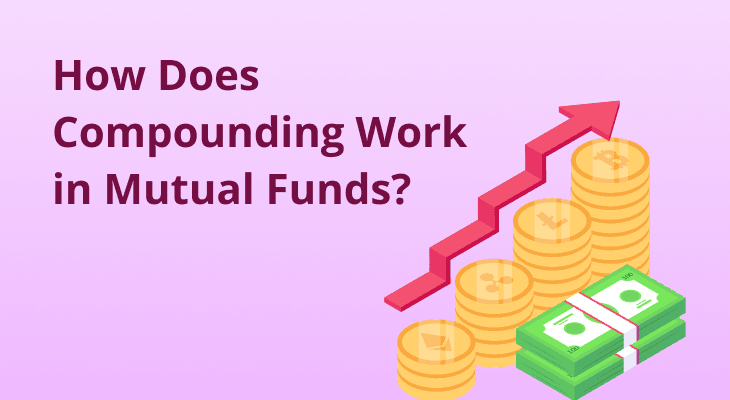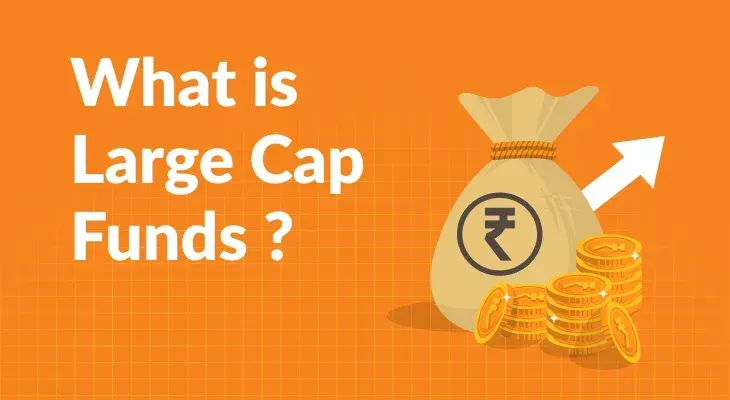
How Does Compounding Work in Mutual Funds?
Compounding is more than just a theory; it is an actual, proven, tool that can have a significant influence on your investment results. Understanding how compounding works in mutual funds is vital, whether you want to steadily grow your wealth or maximise your profits. Let us explore the concept of compounding, its importance in mutual fund investing, and efficient strategies for getting the most out of this powerful financial instrument.
Understanding Compounding
Mutual fund compounding is an easy-to-understand but effective idea that can gradually increase your investment returns. To put it simply, it's reinvesting your investment earnings to generate even more earnings.
Let us say you put ₹1,000,000 into a mutual fund. Your investment increases with time, as does the interest it yields. You choose to reinvest this interest back into the fund rather than taking it out. This implies that both your investment and the interest it produces will increase over the next period.
With each reinvestment, this process continues, increasing the value of your investment. Without actively managing it, you can watch your investment grow over time by taking advantage of compound interest in mutual funds. It's a powerful method to increase the value of your money and create wealth for the future.
How Does Compounding Function in Mutual Funds?
Now that you understand compound interest, let's explore how it functions in relation to mutual funds. As you know, mutual funds pool money from a variety of investors to build a diverse stock portfolio. In turn, these stocks might occasionally pay dividends.
The dividends you receive from your mutual fund investments are not paid to you in cash if you choose to participate in a dividend reinvestment scheme. Rather, they are reinvested, much like interest in fixed deposits, back into the same mutual fund.
The standard compound interest formula is:
TA = P (1+r/n)nt
The variables involved in it are:
TA = the total value of your investment
P = the principal amount that you have invested
r = the rate of interest
n = the frequency of compounding
t = the total tenure of the principal investment
Let’s break it down further with an example. Let’s assume you invest ₹ 1 lakh for a period of 5 years with an interest rate of 12% that is compounded annually. Now, you have values for all the variables. So, by using the compound interest formula, the total value of your investment at the end of the 5-year period will be ₹ 1,76,234. On the other hand, if this was simple interest, then you would get ₹ 12,000 each year which becomes ₹ 60,000 at the end of the tenure. This is the power of compounding, that helped you generate ₹ 16,234 extra in this example.
But why use manual calculations when you can easily calculate your expected returns using the free online compounding returns calculator on m.Stock? Just enter the relevant data, and immediately get future return projections.
You can further boost your corpus by reinvesting the dividends earned back into the fund. This reinvestment enables you to end up buying more units every year. These extra units stack up over the ten-year term, increasing the total number of units you own. Reinvesting dividends regularly allows you to take advantage of the mutual fund’s compounding interest.
Over time, this compounding impact could significantly boost your returns. Even though each dividend might not seem like much on its own, when reinvested and compounded over several years, they add up to make your investment portfolio expand exponentially. By selecting a dividend reinvestment plan, you are utilising the mutual fund's compound interest to allow your investment to increase both consistently and substantially.
Benefits of Compound Interest in Mutual Funds
Exponential Growth Potential
If you invest in mutual funds, you may be able to see your investments increase exponentially through compound interest. The compounding effect allows you to watch your money grow over time by reinvesting your returns.
Passive Wealth Accumulation
Compounded investment in mutual funds, as opposed to active trading, enables you to make money passively. Your returns are automatically reinvested after you set up a dividend reinvestment plan, so you do not need to do a great deal of work.
Long-Term Stability
Investors with a long-term outlook benefit most from compounding. You may fully utilise the compounding effect by investing for a long time, which will allow your portfolio to expand and stabilise steadily.
Inflation Mitigation
Over time, inflation can reduce the buying power of your money. Compounding in mutual funds, on the other hand, works to offset the impacts of inflation by producing returns that beat inflation rates and protect the actual value of your investment.
Risk Diversification
By investing in a diverse range of stocks, mutual funds lower the risk involved in making individual stock investments. You can reduce risk and improve the stability of your investment portfolio by distributing your investment across several industries and businesses.
Consistent Income Generation
Compounding in mutual funds provides a solid dividend reinvestment system for investors looking for a steady source of income. You can gradually grow your investment holdings while earning steady income over time by reinvesting dividends.
Tax Efficiency
Dividends reinvested through dividend reinvestment plans in mutual funds may be taxed, but they can also benefit from tax-deferred growth. By reinvesting dividends within the fund, you may be able to defer taxes on your investment gains, allowing your investment to grow more effectively over time.
Flexibility And Accessibility
Mutual funds provide investors with flexibility and accessibility by allowing them to invest in a variety of amounts and time periods. Whether you're an experienced investor or just getting started, mutual funds provide a flexible investment choice to meet your financial objectives and preferences.
Compound Interest Calculator:
Use compound interest calculators to develop a better understanding of the growth potential of your assets. These online tools enable you to enter key information such as investment amount, term, and estimated rate of return, allowing you to make informed choices about your investment plan.
Key Factors for Maximising Compounding Benefits
To utilise the power of compounding in mutual funds, investors must take a strategic approach:
Long-Term Perspective
Compounding grows with time. The longer you stay involved, the more visible the effects become. Adopt a long-term investing horizon to fully benefit from compounding.
Consistent Contributions
Regularly contribute to your mutual fund assets to help the compounding process. Even little investments might bring significant returns over time.
Diversification
Choose mutual funds with different holdings to reduce risk and increase the stability of your investment portfolio. A well-diversified portfolio may withstand market swings while maintaining consistent growth.
Monitor Performance
While compounding works wonders in the long run, you should check your investment portfolio regularly to verify that it is in line with your future goals. Stay current on market changes and adapt your approach accordingly.
Reinvestment Of Dividends
Join dividend reinvestment schemes offered by mutual funds to easily increase your gains. By reinvesting dividends, you maximise the compounding in mutual funds, increasing your wealth accumulation.
Conclusion
Compounding is a timeless wealth-building strategy. Mutual fund investors could unlock a world of opportunities by carefully reinvesting their earnings, setting the road for long-term financial success. Remember that the key is patience, persistence, and a firm commitment to your long-term financial goals.
FAQ
What is compound interest in mutual funds, and how does it compare to simple interest?
Compound interest in mutual funds refers to the reinvestment of investment returns, which results in an exponential rise over time. Compound interest compounds the returns by taking into account both the principal and the cumulative interest, as opposed to simple interest, which is calculated just on the principal amount.
Is compounding limited to fixed deposits, or can it be used in other investment vehicles such as mutual funds?
While fixed deposits are often linked with compounding, the idea of compounding applies to a variety of investment vehicles, including mutual funds. Mutual fund investors can use compounding to increase their long-term gains by reinvesting dividends.
What factors influence the effectiveness of compounding in mutual funds?
Several factors impact compounding performance in mutual funds, including investment duration, reinvestment frequency, return rate, and contribution consistency. Optimising these factors allows investors to reap the benefits of compounding.
Are there any risks associated with compounding in mutual funds?
Compounding may generate huge long-term gains, but it is not immune to market risks. Stock price fluctuations, economic downturns, and other external events can all influence mutual fund performance, which in turn affects compounding. Diversification and a disciplined investing approach can help in reducing these risks.
Can compounding be helpful for short-term mutual fund investments?
Compounding grows over time, making it ideal for long-term investment perspectives. While it can still yield benefits in the short term, its full potential is achieved over longer periods. Investors with short-term objectives may profit more from various investment strategies customised to their timelines.
How can investors calculate the potential returns from compounding in mutual funds?
There are multiple online calculators and tools available for estimating the possible profits from compounding in mutual funds. Investors may determine the growth curve of their investments by entering essential information such as the investment amount, duration, estimated rate of return, and frequency of reinvestment.
Are there any tax implications associated with dividend reinvestment plans in mutual funds?
Dividends reinvested through dividend reinvestment plans are taxed similarly to cash dividends. However, you may take advantage of compounding by reinvesting dividends inside the fund, possibly balancing the tax impacts with higher returns over time. It is best to consult a tax professional for specific advice on tax issues.


